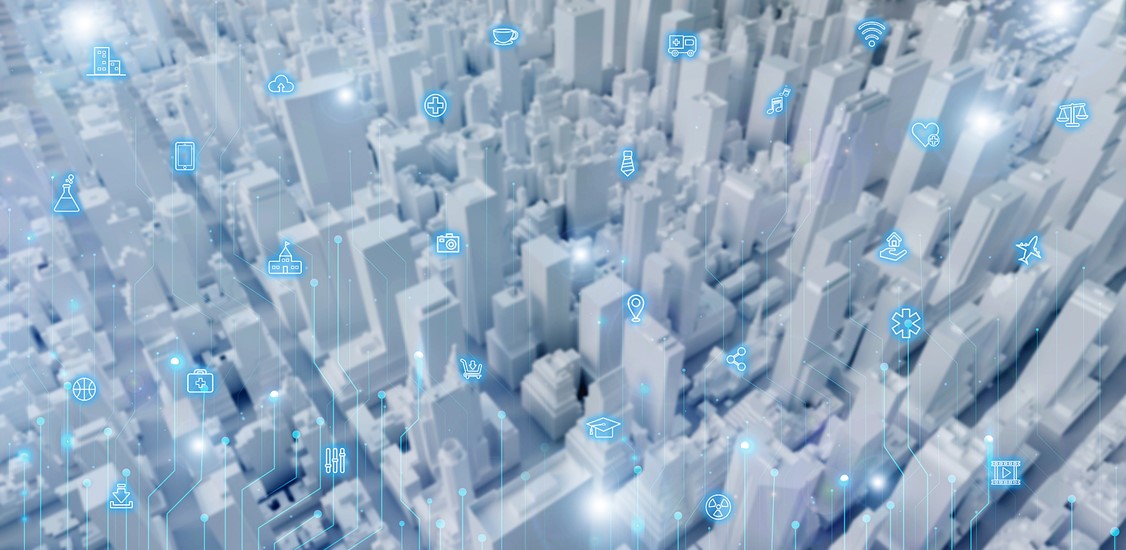Jesse Berst, founder of the Smart Cities Council, once sagely predicted, "If cities are our best hope for a better future, smart technologies are the path to that better future." The reason for this is simple. According to a Deloitte whitepaper about 5G in smart cities, urbanization is gaining speed around the world. Countries are turning to smart city technologies to overcome challenges in population and maximize existing resources. Smart cities represent a bridge towards a practical future of urban development.
In my work, I see certain countries around the globe adopting smart cities at a more rapid pace than others. While cities in the U.S. and Western Europe are dabbling with elements of smart cities for security or environmental reasons, smart city evolution is coming to fruition in places like Southeast Asia, the Middle East, and Africa.
The main reason for this is the obligation of governments in these regions to provide a better quality of life for their citizens. There are traffic problems and safety issues, the infrastructure needs to be updated, and there is no practical way to build anything new. So, one of the biggest promises a smart city can offer is the ability to take advantage of existing infrastructure in order to work smarter, not harder to build cities of the future.
Leveraging existing infrastructure
When one thinks about the promise of technologically advanced cities, it often conjures visions of shiny new metropolises running at peak efficiency. But we must consider that - at least initially - any advancement or development will depend on the city's underlying infrastructure. For a city to be smart, all this existing infrastructure - the roads, the gas lines, the power lines, and the water lines - must be connected to sensors. While the task may sound daunting, countries are finding creative solutions to leverage their existing infrastructure investments.
Take, for example, the venerable streetlight. In certain areas of the world, it may take more work and resources to get a light pole up and run the necessary electrical lines to power it. With smart city technology, these regions can now take that previous investment several steps further by adding sensors, weather stations, and cameras onto existing poles. In doing so, local governments are actively using this existing infrastructure to immediately enhance the lives of local citizens. These sensor devices can improve traffic flow, information, and management; they can even increase public safety by utilizing cameras to protect citizens, especially in scenarios where 24/7 in-person law enforcement is not feasible.
The reality is that in most cities, much of the existing infrastructure we see daily already incorporates some level of automation. From traffic cameras and parking meters on our roads to air conditioning units and automatic doors in our buildings, automated devices are constantly collecting and reporting valuable data in real-time. What makes a city a smart city is that it can gather, organize, and aggregate all of the data that's already available. Smart cities utilize AI and machine learning to process inputs from multiple data sources to help improve quality of life for their residents.
The adoption of AI and IoT (Internet of Things) technologies is expected to accelerate, with data-driven decision-making and predictive analytics leading the charge. As technology evolves, we must take a comprehensive approach to ensure that smart city initiatives benefit all citizens and create a more equitable and sustainable future for everyone.
Prioritizing citizen's needs - lessons from Egypt
Egypt is preparing to introduce 5G-enabled smart city solutions to enhance urban living and provide better security through technology. Last year, the Egyptian government announced the Cities of the Future program, which will introduce 38 new smart cities throughout the country as part of its long-term infrastructure development strategy.
Dr. Rania A. Al-Mashat, Egypt's Minister of International Cooperation, believes that these new 4th-generation smart cities will provide a high quality of life suitable to attract both people and industry. She points to the delivery of large infrastructure projects - such as water treatment plants, waste treatment facilities, and roads - as indicators of the progress the country is already making.
Through my organization’s work within the country, I see an Egypt that wants technology-driven urban solutions that prioritize citizen needs, ensuring inclusivity, safety, and efficient services for all residents. The Egyptian government is exploring technology that can revolutionize city landscapes, enabling real-time data exchange, seamless connectivity, and improved services.
The smart city projects in Egypt will range from smart transportation and energy management to AI-driven public services. Plans are already underway to upgrade and improve traffic congestion as well as reimagining the public transportation system. This includes building out the world's largest monorail system to connect people and places throughout the country, a project that is already well underway.
Egypt has also prioritized sustainability and resilience in its smart cities. Leveraging IoT sensors to automate everything from city landscape irrigation systems to streetlights, they are looking into technology-driven sustainability efforts that optimize resource use, reduce energy consumption, and mitigate environmental challenges.
The economics of education in smart cities
Beyond the myriad societal and ecological advantages, smart cities must deliver a significant economic impact to prove adequate return on investment. Smart city projects stimulate job creation, attract outside investments, and foster technological innovation for the country and the surrounding region.
Smart cities need skilled workers. In Egypt's Cities of the Future program, high-quality education is a core component that helps to fill a talent pipeline for modern industry. The Egyptian government is committed to structural educational reform focused on Information and Communication Technology (ICT) training and developing schools with a strong STEM (science, engineering, technology, and mathematics) curriculum.
In greater Cario, the New Administrative Capital (NAC) smart city will be home to six universities that put an emphasis on vocational training. Today, more than 15% of the Egyptian economy is related to construction and development, which is only expected to grow.
With a stronger technical and vocational workforce, Egypt is positioning itself to become an alternative manufacturing hub for technology. As a viable China offset, these smart cities are primed for both foreign and domestic investment. From residential housing to educational, vocational, and commercial facilities and government buildings, there is new construction taking place simultaneously throughout Egypt. Supporting this economic boom will require upgrading to future-proof infrastructure to accommodate future advancements and keep up with changing demands.
A visionary urban future
One key to the success of this project is that the Egyptian government understands and values private-sector engagement. President Sisi and his administration recognize that partnerships between technology providers, governments, and local stakeholders will ultimately drive successful smart city transformations.
Today, Egypt is showing the world how smart cities will shape a visionary urban future. When innovation meets sustainability - and education and connectivity enrich daily lives – smart cities can truly empower their communities to succeed and set them up for long-term, sustainable progress.






















